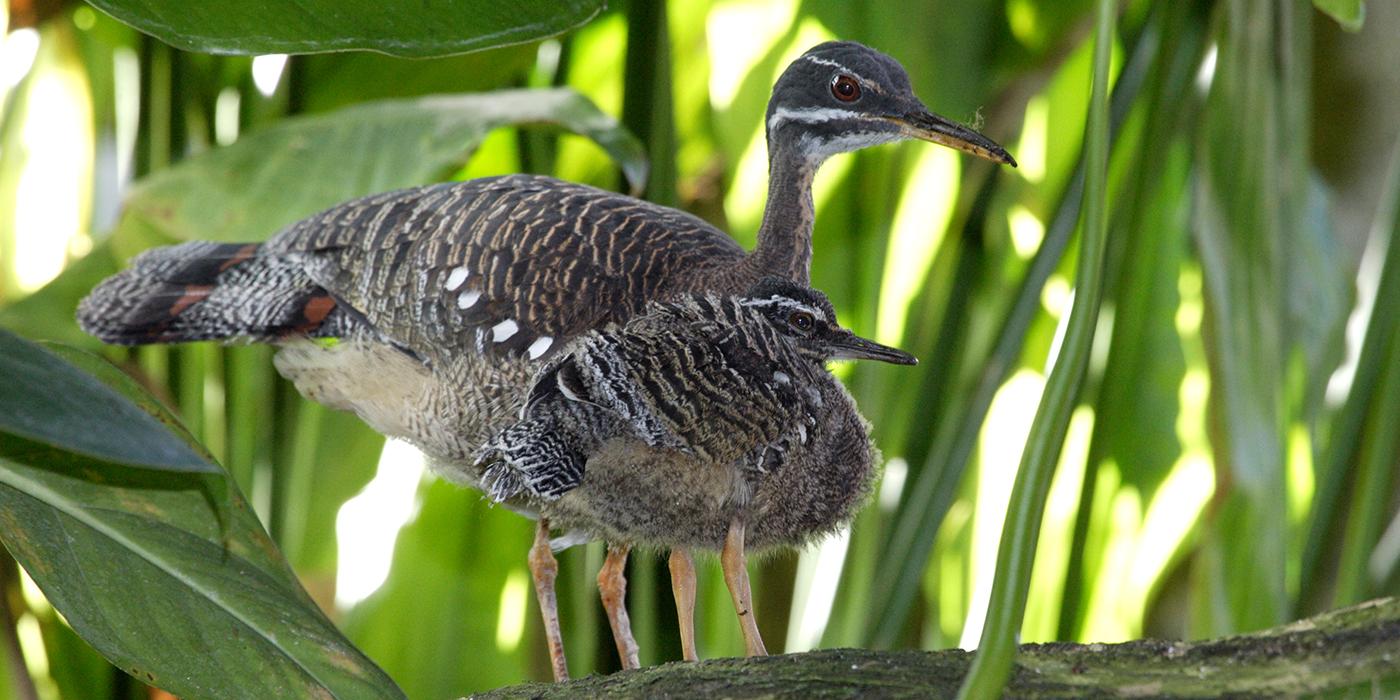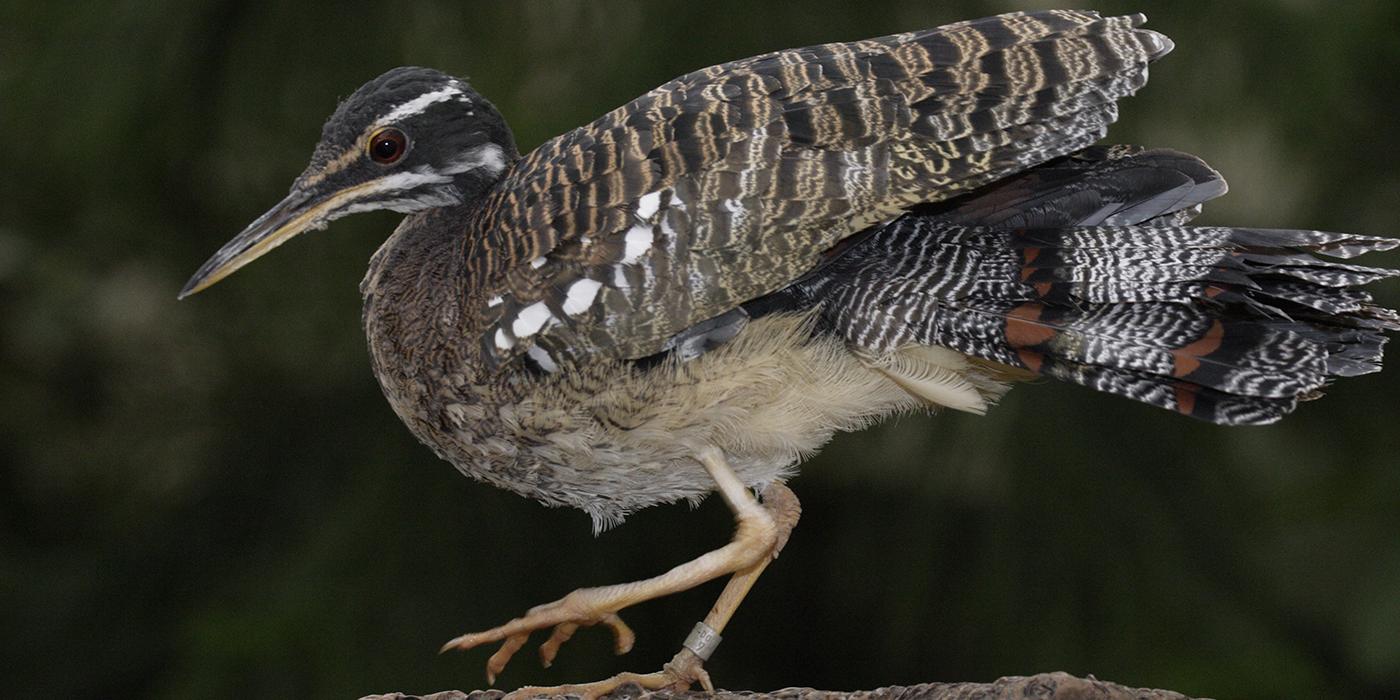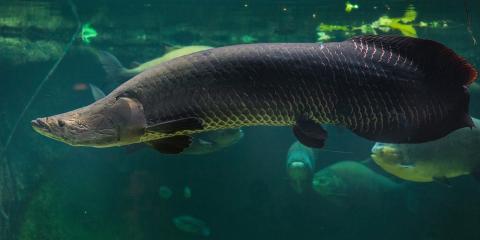Physical Description
The sunbittern has long legs, a slender heron-like neck and a long bill with a stout body and small head. Its plumage is full and soft with a unique design of colors: the head is nearly all black with white striping above and below its red eyes; its neck, breast and shoulders are brown; and the belly, throat and undertail are a pale white.
Under the brown plumage is an orange-chestnut patch near the tip of each wing and the lower jaw and legs are bright orange in color. The only member of the Eurypygidae family, the sunbittern is related to rails and bustards.
Sunbitterns mainly walk, but when they do fly, it is a graceful movement with slow wing beats. When frightened, they will fly and perch in high trees, unfolding their tail and wings to reveal conspicuous patches of chestnut and orange, a display for threat and defense.
Size
They reach about 18 inches (45.7 centimeters) in length.
Native Habitat
Sunbitterns are found in Guatemala and northern Brazil in foothills, lowlands and well-wooded banks of streams and creeks with shallow wading water. They can be found at elevations up to 3,000 feet (909 meters).
Lifespan
The average lifespan of a sunbittern in the wild is unknown but is about 15 years in human care. In 2011, a male sunbittern on exhibit in Amazonia died at 33 years old. He was the longest living sunbittern on record in any North American zoo.
Communication
When threatened, the sunbittern will often let out a low hiss accompanied by bowing movement toward the predator and/or engage in a frontal display where the bird will stretch out his wings and tail.
Food/Eating Habits
Sunbitterns hunt fish, amphibians, crustaceans and insects, which they catch by striking quickly with their long necks and spear-like bills. At the Zoo, sunbitterns are fed avian (crane) maintainer, Bird of Paradise pellets, soaked scenic pellets, mice and live food, such as mealworms, corn grubs, wax worms and crickets.
Social Structure
Sunbitterns are often found individually or in pairs.
Reproduction and Development
Nests are shallow cups made of sticks, mud and decaying vegetables and are usually built in a bush or tree 10 to 20 feet (3 to 6 meters) above the ground. A clutch typically has two or three light brown eggs that feature dark spots and blotches. Both parents take turns incubating the eggs, which will hatch after about 28 days.
The male and female protect and feed the chicks during the first two weeks and do not leave the nest unattended. If a predator approaches, either the male or female will engage in a broken-wing display to distract the predator from the young chicks. After two weeks, the chicks can be left alone for several hours while the parents hunt for food.
Conservation Efforts
While currently not endangered or threatened, the sunbittern population is diminishing due to habitat loss.
Help this Species
- Reduce, reuse and recycle — in that order! Cut back on single-use goods, and find creative ways to reuse products at the end of their life cycle. Choose recycling over trash when possible.
- Are you a student? Did you love what you learned about this animal? Make it the topic of your next school project, or start a conservation club at your school. You'll learn even more and share the importance of saving species with classmates and teachers, too.





